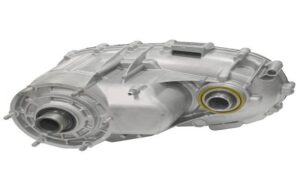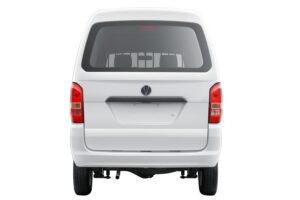Van Life 101: The Ultimate Guide

From thrill-seekers and penny pinchers to famous Instagram travel influencers, the number of Americans living out of their van has exploded to over 3.1 million in recent years, giving people a much-needed break from the high cost of housing and utilities. Who needs a house when you can take all the comforts of home on the road? Modern campers and expert DIY conversions make it easy to live on the go, but becoming a nomad requires planning and preparation. You need to calculate your expenses, research your route and stock up on essentials beforehand to survive on the road. Use this guide to plan every detail of your adventure to avoid getting stuck between a rock and a hard place.
Living Out of a Van
Van life means using a recreational, passenger or commercial vehicle as a residence. The rest is up to you. The term means different things, depending on whom you ask or which blog/influencer you subscribe to. It doesn’t matter where you go, how far you travel or how many appliances you’ve wired into the back of your van as long as you’re safe and healthy.
Some people see van life as a part of the counterculture movement, a rejection of capitalism and the American dream of owning a home. For others, it’s about community and seeing as much of the U.S. as possible. Your lifestyle depends on your goal, how well you prepare and how much you’re willing to spend.
Budgeting for Van Life
If you’re used to paying rent, you’re bound to save money as a nomad. If you own a home, you can rent it out while traveling to make extra cash or help pay the mortgage. However, you’ll need to spend at least several thousand dollars getting your new lifestyle up and running.
Choosing a Van
Finding your new home on wheels will be your biggest expense unless you own a suitable camper. The average cost of a new live-in van is around $33,768, according to Yahoo Finance, but you’ll still need to do a few conversions to make it livable. Luxury campers can cost well over $100,000, perfect for those who want to get up and go without much prep. Add-ons like all-wheel drive for off-roading and increased handling in slick conditions will cost you more.
Consider the vehicle’s mpg rating, where you plan on driving, and how many modifications will be needed to feel comfortable. Used vans and campers can go for as little as $10,000, but they’ll likely need extensive repairs before making tracks. Review the service history and have a mechanic inspect the systems. If the truck uses an exhaust gas recirculation system, replace the EGR cooler after 50,000 miles or less.
Diesels haul heavy loads at low speeds using highly compressed air and fuel. As the fuel injection system ages, your mpg rating will decrease. Replace the injection pump and aging/clogged fuel injectors to maximize efficiency. You can also hitch a camper to the back of your existing truck for around $10,000.
Van Conversions
Converting a barebones Sprinter van into a home can range from $2,000 to $30,000, depending on your living standards. If you’re an experienced woodworker or are willing to learn, you can do the remodel yourself. Yahoo reports that around 80% of campers do their own conversions. Maximize the space by adding shelves or a kitchenette under or over your bed. You can also hire a professional renovation company to add these features.
Keep your supplies organized so you can find them in an emergency, including a first aid kit, water, food, survival gear and repair tools. If you plan on working remotely, consider making space for a table and chair if it’s too cold to work outside or you don’t have money to sit at a cafe. Many lifers use their cell phone’s hotspot to get internet when they don’t have access to a local Wi-Fi network.
For electricity, consider using a portable solar battery to power your electronics and appliances when parked. Add insulation, a heater when traveling to cold areas and an A/C or fan to stay cool at night.
Repairs, Fuel and Insurance
Once you have a van, gas will be your next biggest expense, with most van lifers spending between $200 to $500 per month on fuel. Track your efficiency ratings and service the vehicle when it starts to dip.
Stock up on diesel parts to keep everything you need to repair your truck or van on hand instead of waiting on the nearest mechanic to order the parts. You’ll also need insurance to protect your van from theft and accidents. Sign up for an RV Class B motorhome policy, which should cover the rebuild and your possessions in addition to regular auto insurance.
Preparing for Van Life
Most people can’t just up and leave without settling their affairs first. Sell or find a place to store anything that won’t help you during the trip. Traveling with too much junk will only slow you down. You can store it at a friend’s house or rent a storage unit for a few hundred dollars a month.
Give your friends and family a general idea of where you’re going. Keep your emergency contacts on your person in case of emergency. To get mail, change your address to a family member’s house or a P.O. box in a central location. Plan on visiting at least once a month to see what you’ve missed. Switch to a nationwide health insurance policy that will cover you in the Lower 48 states.
Establish a community with your fellow van lifers to stay social. Use the app Sēkr to find local meet-ups. Download Dyrt and iOverlander to find campsites, free showers and dumping stations. Van life is more fun when you have other people to share it with. The next chapter of your life is sure to be the most exciting yet! Follow this guide to make the most of your newfound freedom.





